Why Podiatrists Say You Should Never Ignore Painful Cracked Heels + Easy Home Remedies
Tip: Don't toss that banana peel!
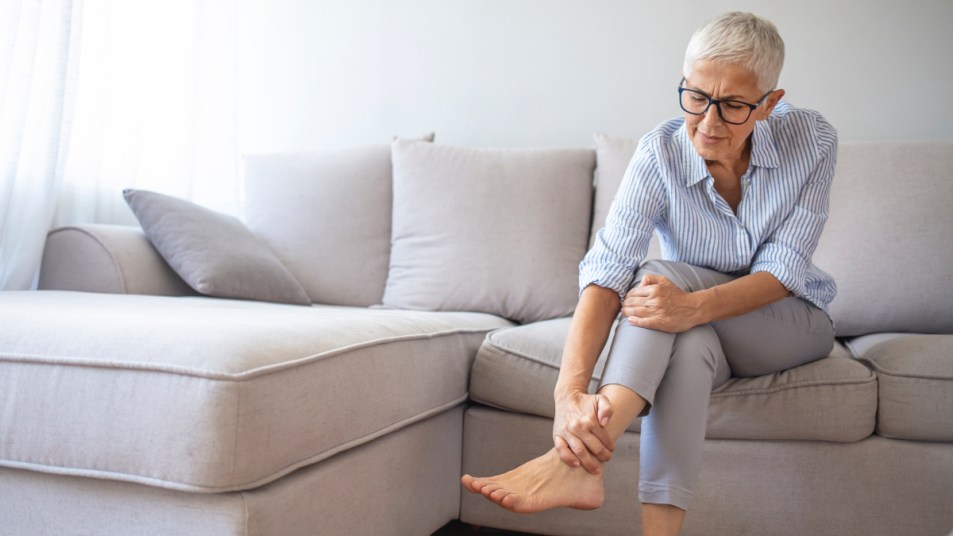
Sure, you know how important it is to keep your skin moisturized. But if you’re like us, it can be easy to forget that your feet need a little TLC, too. Painful cracked heels are more than just unsightly — they can cause discomfort with every step. Left untreated, experts say they can even lead to an infection. The good news: There are easy home remedies that smooth, soften and protect painful cracked heels so you can put your best foot forward.
What exactly are painful cracked heels?
Cracked heels, or heel fissures, occur when the dry, thick skin on or around the sides of your heel cause little splits. When this happens, skin on the bottom of the heel can develop into calluses, which occur from repeated friction or pressure to the same area, explains Suganthi Kandasamy, DPM, a podiatrist and an assistant professor in the department of orthopaedic surgery at the UT Southwestern Medical Center in Dallas.
“These calluses can build up and become thicker over time,” says Dr. Kandasamy. “As a person walks and places more pressure on their heels, these calluses can develop into cracks.”
Spotting cracked heels is pretty easy. “Initially, someone may notice the formation of thickened, hard skin around the heel,” says Dr. Kandasamy. “It may be brown or yellowish in color. Small visible cracking may be noted, and you also may experience itchiness and flaky skin.”
Painful cracked heels can vary from person to person, says Dr. Kandasamy. Some people may have soreness while others may describe their pain to be sharp, making it hard to bear weight on their feet, she adds.
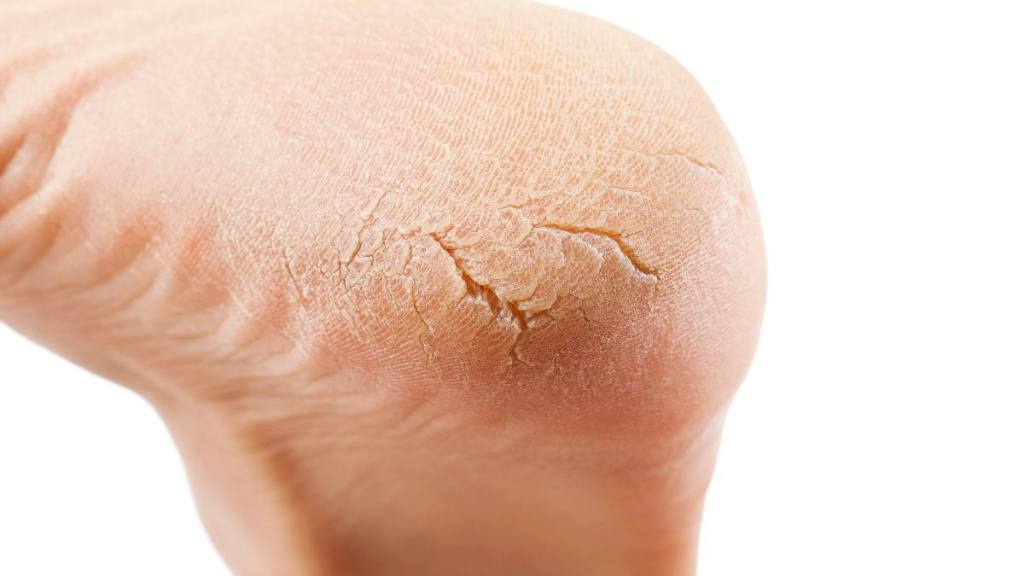
Dry skin is a top trigger of painful cracked heels
Heel fissures happen for a variety of reasons, with dry skin being a common culprit. One reason for your feet being more prone to dry skin is because feet don’t contain any oil glands, which naturally hydrate skin.
Environmental and lifestyle factors can also play a role in dry heels. Skin exposed to colder climates, places with low humidity, dry indoor heating or intense sunlight can all contribute to rough, tight, flaky or scaly skin. Long, hot showers or baths and the use of harsh soaps or body washes can also dry out skin.
Other causes of cracked heels include standing on your feet for prolonged periods of time, having flat feet, walking around barefoot and wearing unsupportive footwear, adds Dr. Kandasamy.
Risk factors for painful cracked heels
Who’s most at risk for heel trouble? According to the Institute for Preventive Foot Health (IPFH), about 44 million U.S. adults have cracked heels. But some people are more susceptible than others. In fact, the IPFH reports cracked heels is more severe among women.
“Research has shown cracked heels are more prevalent among women due to the use of high heels and open-back shoes,” says Dr. Kandasamy. “When your feet aren’t adequately supported or weight isn’t evenly distributed from these types of shoes, the fat pad in the heels can expand sideways. This can cause increasing pressure on the skin, which can possibly lead to cracking,” she explains. Wearing open back shoes can also expose heels to dry air.
Here’s some other factors that may put you more at risk of having cracked heels:
1. Gaining weight
Weight gain can have a negative impact on the mechanics of the foot, which in turn can cause cracked heels, says Amanda Killeen, DPM, an assistant professor at the University of Texas Rio Grande Valley School of Podiatric Medicine in Harlingen, TX.
“Being overweight causes an extra amount of pressure on heel,” says Dr. Killeen. “There’s a really thick, dense fat pad right underneath the heel bone. But if something squishes this fat pad more than it should, pressure can occur from inside of the skin can cause a crack in the heel.” (Click through to learn how a big breakfast aids weight loss and fights diabetes.)
2. Going through menopause
Menopause may also play a role in painful cracked heels. A condition called keratoderma climactericum, which causes skin thickening on the hands and feet, is associated with menopause, affecting the feet more severely, found a study in Clinical and Experimental Dermatology. Researchers say lower levels of estrogen affect the structure and functions of the skin, causing water loss and a reduction in skin-firming collagen. What’s more, plunging estrogen levels can leave skin drier than normal from head to toe. (Click through to see the 7 best natural menopause treatments that work.)
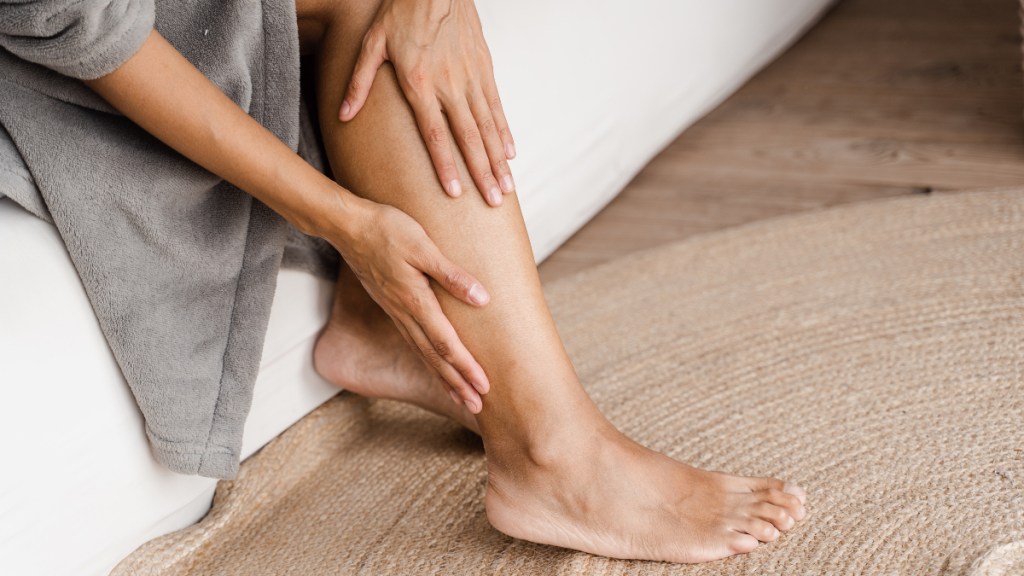
3. Certain medical conditions
Some chronic diseases and health conditions can up the odds of painful cracked heels. One of the most common is diabetes, which can cause changes in the skin of your foot, including peeling, cracking or dry skin. This is caused by diabetes-related nerve damage and the ability of the body to control moisture in the foot. Nerve damage can also affect feeling in the foot, possibly preventing folks from realizing the severity of their cracked heels.
“When people have diabetes, one of the most common effects is they may not experience normal sensations in their feet,” says Dr. Killeen. “That can include burning, tingling, numbness, feeling cold when they’re warm and warm when they’re cold. This can prevent them from being aware if they have a heel fissure. Pain warns us when something is wrong. If it’s not there, these small fissures can turn into something bigger.”
An autoimmune disorder such as hypothyroidism (an underactive thyroid) can also contribute to dry cracked heels, says Dr. Kandasamy. And those with eczema, psoriasis or athlete’s foot — which can cause dry skin — are also more prone to heel fissures.
Why you should never ignore painful cracked heels
Splits in the skin, even if they’re small, can get deeper over time if left untreated, says Dr. Killeen. “These fissures can lead to bleeding, pain and development of open wounds. They can be an entrance for bacteria to enter the cracks and cause an infection, such as cellulitis,” she explains.
Tip: Thinking of getting a salon pedicure to help pamper painful cracked heels? Make sure the salon carefully sterilizes their instruments and ask if they can use a plastic liner in the tub, suggests Dr. Killeen. “These tubs can be really hard to clean, and some of the jets could have bacteria and fungus from other people,” she says. “You want to be sure your feet are only in a water basin you’ve touched.”
The best foot cream for cracked heels
When it comes to treating cracked heels, moisturizer is your best friend. But not every one will do the trick. First, you want to look for a cream, not a lotion, says Dr. Killeen. “Lotions contain alcohol and may cause mild drying as it evaporates,” she explains. “They’re formulated to be lightweight and absorb quickly. Creams are thicker and keep moisture in the area where you apply it.”
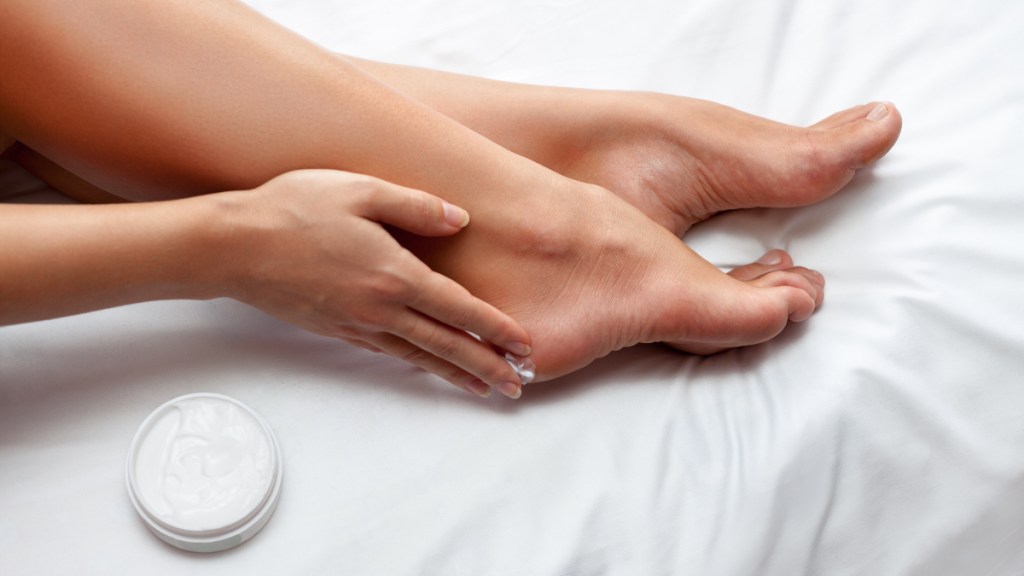
Dr. Killeen recommends choosing a cream containing urea, a top moisturizing ingredient that helps soften skin and get rid of dead skin cells on your heels. Another ingredient she recommends is lactic acid, an alpha hydroxy acid that allows your skin to retain more moisture.
To get the most bang for your buck, look for a product with both ingredients, which she herself uses. “After taking a shower, I pat my feet dry and apply the urea-lactic acid combo cream,” Dr. Killeen says. “I like to allow the cream to absorb into my skin for a few minutes by dangling them over my bed, then put on a pair socks to keep the moisture in.” One she likes is O’Keeffe’s for Healthy Feet Cream (Buy from Amazon, $8.82).
Home remedies for cracked heels
Taking care of and treating painful cracked heels doesn’t have to be complicated or expensive. In addition to keeping your feet moisturized, these four DIY home remedies for cracked heels can help.
1. Buff heels with a pumice stone
Soaking your feet in warm, soapy water for 10 minutes and using a pumice stone can do wonders for softening skin so you can slough off any thick, callused areas. (Click through to see how to prevent calluses on feet.)
Start the process when feet are still warm and wet by rubbing the pumice stone gently back and forth, advises Dr. Killeen, who also adds this can be done once a week. Tip: Stick with a pumice stone or a coarse loofah bath sponge. Using razors or heel “graters” can injure the skin.
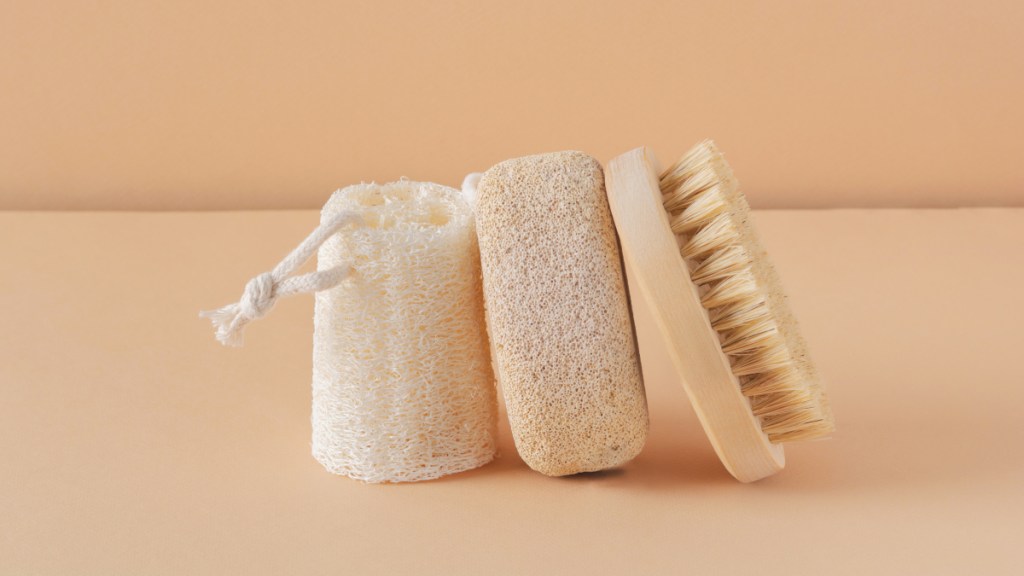
2. Smooth on a banana peel
Sounds strange, but rubbing the inside of a banana peel over your rough heels can smooth and soften skin. A study in International Journal of Mechanical Engineering found when folks used an extract created from the inside of a banana peel on their cracked heels for 5 consecutive days, it softened, moisturized and helped heal their fissures.
Bananas (and their peels) are rich in hydrating potassium plus vitamin A, zinc and manganese, which help skin healing. Simply smooth the inside, fleshy part of a banana peel over clean, dry heels once daily to get the benefits.

Related: 15 Brilliant Uses for Banana Peels — From Whitening Teeth to Warding Off Pests
3. Dab on petroleum jelly
Smoothing plain petroleum jelly, such as Vaseline, on your heels locks in hydration and allows skin to heal. To maximize results, Dr. Kandasamy recommends applying the petroleum jelly to feet before bed and wearing socks to retain moisture while you sleep.
4. Apply a liquid bandage
If your heel cracks are especially painful or deep, using a liquid bandage can protect skin while it heals. By forming a protective barrier, a liquid bandage can decrease pain, speed up healing and prevent germs from entering.
“Liquid seal protectants are one treatment option for cracked heels,” says Dr. Kandasamy. “The product can help to repair the cracks and restore healthy skin.” One to try: New Skin Liquid Bandage (Buy from Walgreens, $8.49).
For more ways to keep your feet healthy and pain-free:
“I’m a Podiatrist and *This* Is the Drugstore Cream That Prevents Calluses”
Are Your Feet Always Freezing? *This* May Be the Surprising Culprit
Top of Foot Pain Is The Foot Problem No One Talks About — Doctors Reveal How to Outsmart It
This content is not a substitute for professional medical advice or diagnosis. Always consult your physician before pursuing any treatment plan.













